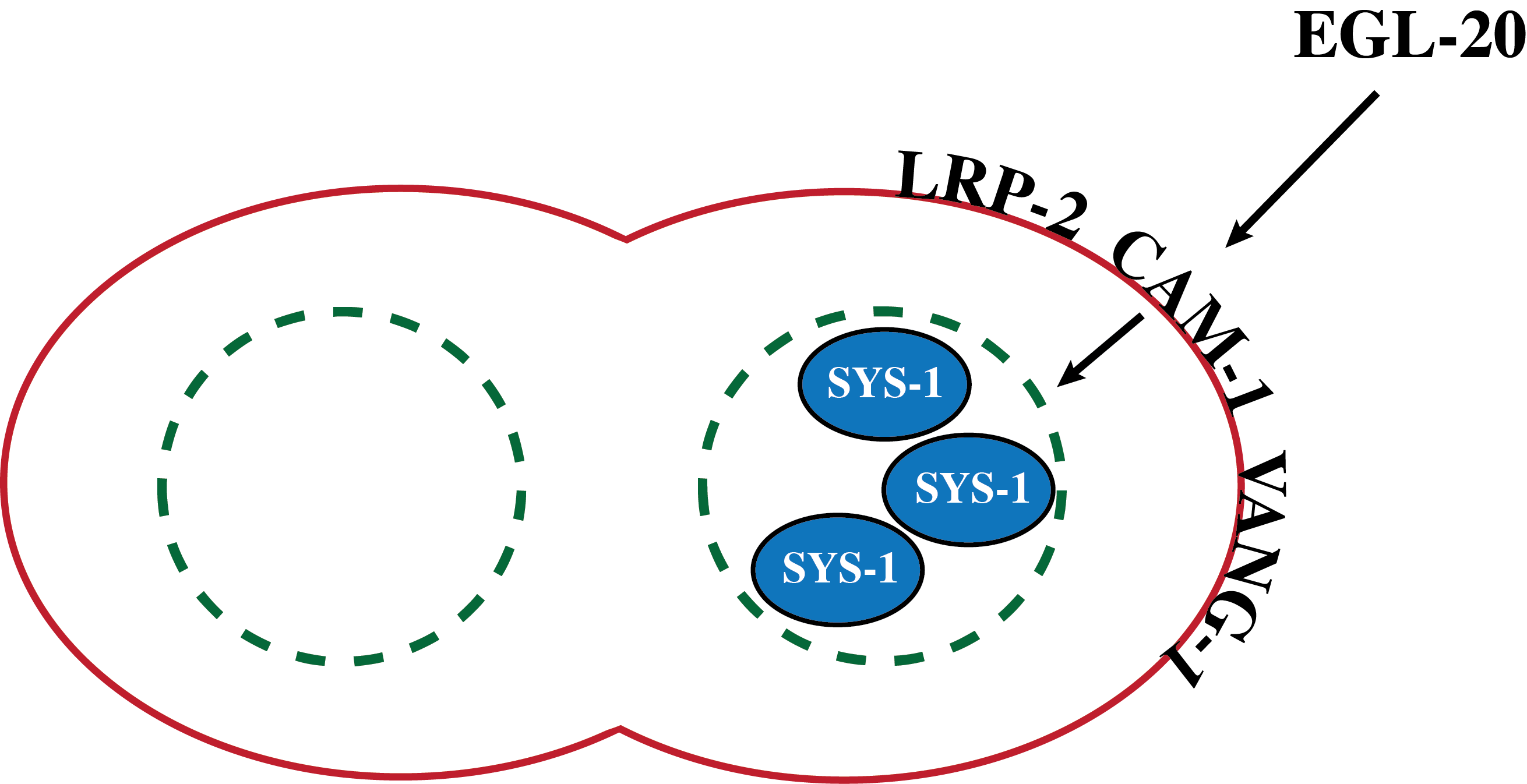Department of Biology, Hopkins Marine Station of Stanford University, Pacific Grove, CA 93950. paul.j.minor@gmail.com
Description
We investigated the role of the low-density lipoprotein receptor lrp-2 in C. elegans vulval cell lineage polarity. We find that despite the high conservation of the Wnt signaling component, LRP5/6, in higher order organisms it appears to have evolved after the split of Nematoda due to its absence in all nematode genomes examined. C. elegans contains multiple low-density lipoprotein receptors within its genome, two of which are lrp-1 and lrp-2. Due to the position in the genome and high sequence similarity we believe that lrp-2 is the product of a recent duplication of lrp-1 within the Caenorhabditis lineage (Minor and Sternberg, 2019d).
To understand the potential role of lrp-1 and lrp-2, we sought to score the vulval phenotypes of these mutants during L4 stage. lrp-1(ku156) mutants are sick and arrest during an early larval stage. For this reason we were not able to examine the role of lrp-1 in vulval formation. Despite high sequence similarity and proposed functional redundancy with lrp-1, lrp-2 mutants are remarkably wild-type. lrp-2 is expressed in the developing vulva at the same time as both cam-1 and vang-1. By examining double and triple mutant strains we find that lrp-2 is likely to function downstream of egl-20 along with transmembrane proteins cam-1 and vang-1 (Minor and Sternberg, 2019b; Minor and Sternberg, 2019c). All three genes antagonize the lin-17/Frizzled pathway by directing the aberrant localization of SYS-1 to the posterior daughter cell of P7.p, thereby leading to the posterior orientation of the P7.p lineage (Minor and Sternberg, 2019a). These observations suggest the simple model shown in Figure 1, in which LRP-2 cooperates with CAM-1 and VANG-1 to respond to EGL-20.
This work provides evidence that despite lacking a true LRP5/6 ortholog, the formation of the C. elegans vulva is controlled by another member of the low-density lipoprotein superfamily, lrp-2. This data could potentially lead to insight into the evolution of both structure and function of the highly important Wnt pathway component, LRP5/6. Despite strong genetic evidence, this work does not describe the physical interaction between LRP-2 and CAM-1, VANG-1, EGL-20. Can LRP-2 bind with the other transmembrane proteins, CAM-1 and VANG-1, involved in this pathway? Can LRP-2 physically bind the Wnt ligand, EGL-20? Future work should focus on the biochemistry of this pathway. Answers to these questions could provide interesting insights into the evolution of low-density lipoprotein receptors, including LRP5/6, as well as how Wnt signaling has evolved within nematodes without the presence of one of the most important and highly conserved transmembrane proteins.
Reagents
Strains: Strains obtained from the CGC and provided by the C. elegans Reverse Genetics Core Facility at the University of British Columbia, which is part of the international C. elegans Gene Knockout Consortium.
MH210: lrp-1(ku156)/gld-1(q266)
VC621: lrp-2(gk292)
VC543: lrp-2(gk272)
References
Funding
Howard Hughes Medical Institute, with whom PWS was an Investigator. The National Institute of Neurological Disorders and Stroke of the National Institutes of Health under award number 1F32NS098658-01A1 awarded to PJM.
Reviewed By
David EisenmannHistory
Received: July 29, 2019Accepted: August 26, 2019
Published: August 27, 2019
Copyright
© 2019 by the authors. This is an open-access article distributed under the terms of the Creative Commons Attribution 4.0 International (CC BY 4.0) License, which permits unrestricted use, distribution, and reproduction in any medium, provided the original author and source are credited.Citation
Minor, PJ; Sternberg, PW (2019). The role of lrp-2 in C. elegans vulval cell lineage polarity. microPublication Biology. 10.17912/micropub.biology.000155.Download: RIS BibTeX




